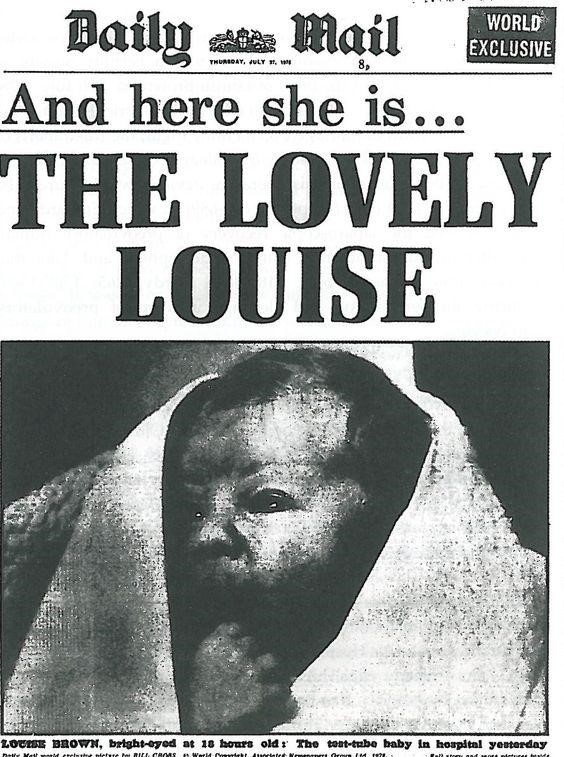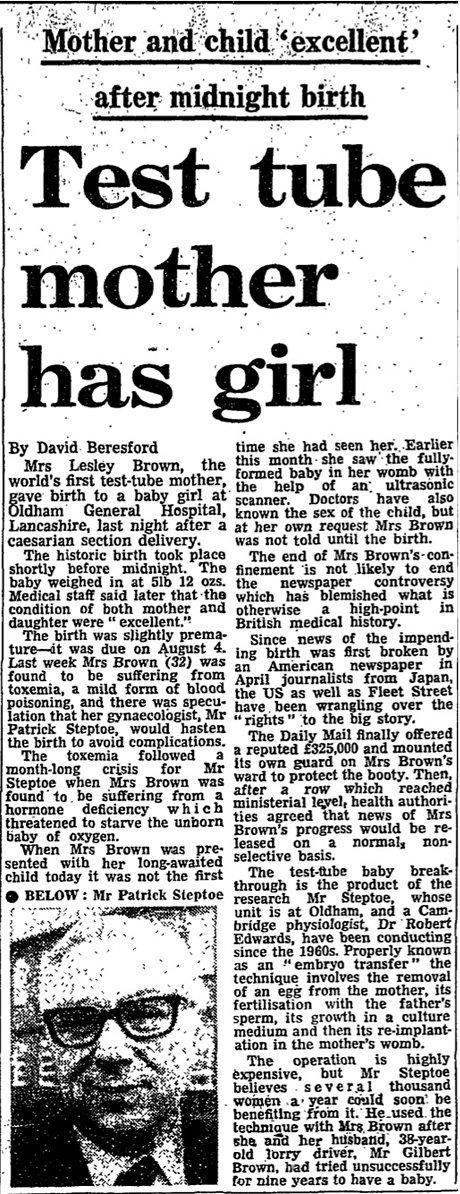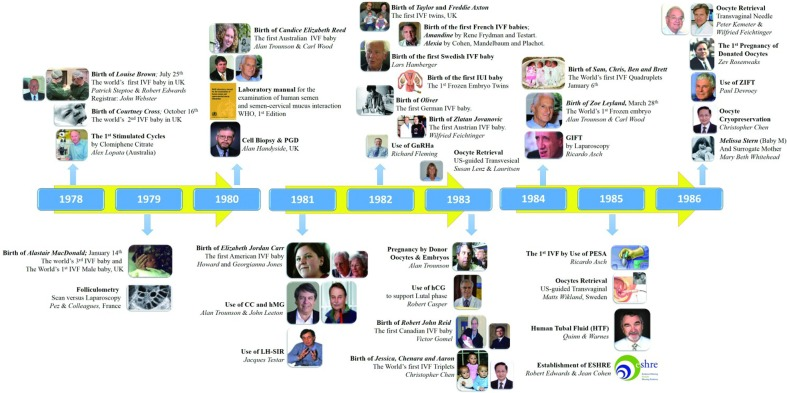Dear students, let's research The history of MAP collaboratively.
https://docs.google.com/document/d/1nE0MJpc1c1-iEoUJf4udRL3yv1UcOu5xysUacg2LlhE/edit?usp=sharing
MAP
Medically Assisted Procreation
Croatian team
French team
Introduction
Artificial insemination is a medical procedure of assisted fertilization of the egg, the transfer of fertilized embryos into the uterus, implantation and pregnancy development. Artificial insemination is practiced because of woman’s or man’s infertility, or when both of them are infertile or when there is a fear of transferring genetic disease to the child. Until 2010, in the world 4 million children were born with help of in vitro fertilization.
In 1932, Aldous Huxley described the technique of IVF (in vitro fertilization) in his science fiction novel "Brave New World". In 1934, Gregory Pincus mixed rabbit’s eggs and sperm in the glass top of his watch and implanted the developing embryo in a surrogate rabbit. However, it was not until 1959 that Min Chueh Chang, a young Chinese reproductive investigator, obtained undoubted evidence of in vitro fertilization by achieving live births for the first time from a white rabbit by using eggs and sperm from black one.
In 1961,Palmer, from France described the first retrieval of oocytes by laparoscopy.
In 1965, Robert Edwards together with Georgeanna and Howard Jones at Johns Hopkins Hospital in the USA attempted to fertilize human oocytes in vitro.
The first human IVF pregnancy was in 1973, reported by professors Carl Wood and John Leeton in Melbourne, Australia. Unfortunately, it ended in an early embryo death (less than one week). In 1976, Patrick Steptoe and Robert Edwards published a report on an ectopic pregnancy following a transfer of a human embryo at its late morula stage.
In the 1980s, direct intraperitoneal insemination (DIPI) was sometimes used. Doctors injected sperm into the lower abdomen through a surgical hole or incision, with the intention of letting sperm find the oocyte in the ovary.
The first ever IVF birth occurred in England on July 25, 1978. The birth of Louise Brown was the result of the collaborative work of Patrick Steptoe and Robert Edwards. When Louise Brown was born, it really startled the public and got people thinking and talking… at least initially, and it made a lot of people more positive toward biotechnology than they had been. After all, her birth appeared to make it the case that the problem of infertility would be solved. People were too optimistic about that. Of course in the majority of cases, in vitro fertilization does not result in a successful pregnancy. But nevertheless, a lot of people were very enthusiastic and saw this as solving a terrible problem. And infertility certainly is a terrible problem, a terrible burden for people who have to bear it.


Public interest in Assisted Reproductive Technology (ART) has remained high since the birth of the world’s first in vitro fertilization baby, Louise Brown, in the United Kingdom. ART allows scientists to manipulate the fertilization process in order to bypass some pathological obstacles such as blocked fallopian tubes, non-functioning ovaries in the female and blocked ductus deferens or low sperm count in the males
Timeline of major MAP milestones (Year 1978–Year 1986)
HISTORY OF MAP IN CROATIA
In Croatia the first IVF was performed in 1983 in Petrova Maternity Hospital in Zagreb. It was done by Prof.D.Sc. Velimir Šimunić M.D. head of the IVF Polyclinic, and the baby Robert was born. The greatest success was, that he was the first IVF baby in Croatia. At that time Croatia was the 7 th country in the world which obtained the result by this most complex way of treating infertility.Today Robert is a grown up man, and he says: “My life is normal, and being a test tube baby is completely normal to me. I have never felt different because of that.”
Nowadays women often decide to have the first baby in their 30-ties and 40-ties, which greatly decreases the chances for natural conception. So, it is not surprising that the number of children conceived by the IVF is rapidly increasing in the world. In Croatia, also, more and more women decide to conceive by the IVF.
So, the data show that by the year 2010, in Croatia 20 000 babies were born, conceived by the IVF. Croatia is among rare countries in which women up to 42 years of age have the right to undergo six IVF procedures free of charge, which is more than generous compared to other countries in the world.
HISTORY OF MAP IN FRANCE
Amandine and her parents
Even if in vitro fertilization
(IVF) at the beginning was controversial, it has now imposed itself as an effective treatment for infertile couples.
Since the birth of
Louise Brown,
the first test tube baby, in England in 1978,
other five million babies
have been born all around the world. It was only the 24 february 1982 that the first test tube baby was born in France. At the Antoine Beclère hospital of Clamart, thanks to the Professor René Frydman, the chief of the gynecology service Emile Papiernik, and the biologist Jacques Testart.
The fisrt French test tube baby was named Amandine, she weighted around 3,4 kg and was 51 inches tall. Amandine is now a completly healthy 35 years old woman.
The story of
Amandine was publicized once again in 2017, because Amandine is now the mother of a little girl. As a mother, Amandine wanted to publicize her pregnancy to show that « people who were born from IVF didn't have more infertility problems than any other people
.
It's a symbol, medecine helps couples at a moment in time, and 30 years later, everything is natural, we don't inherit infertility ». It was
D
octor Frydman who helped giving birth to her daughter. For Amandine it was quite symbolic since he was the one who helped her
mother to
give birth to her
. Mr Frydman was also Amandine’s godfather.
Nowadays around 350.000 babies are now born by IVF every year
,
which represents 0,3% of the 130 million babies who are born in the world each year.
The French doctors who made the first test tube baby in France :
(from left to right) : René Frydman, Jacques Testar, Emile Papiernik
Presentation prepared by Lycée et collège Victor Duruy students
Zoe Jarnier and Gena Gaouaoui are ready to work on this subject. Who wants to team up with them?
Contact them at :
zoe.duruy@gmail.com
gena.duruy@gmail.com
Hi, I am Monika Zmiša and I am leader of the team who is gonna work with you on History of MAP. My contact mail is
monika999zmisa@gmail.com Looking forward working with you. Also, I've shered with you google document where we can collaboratively write our article.